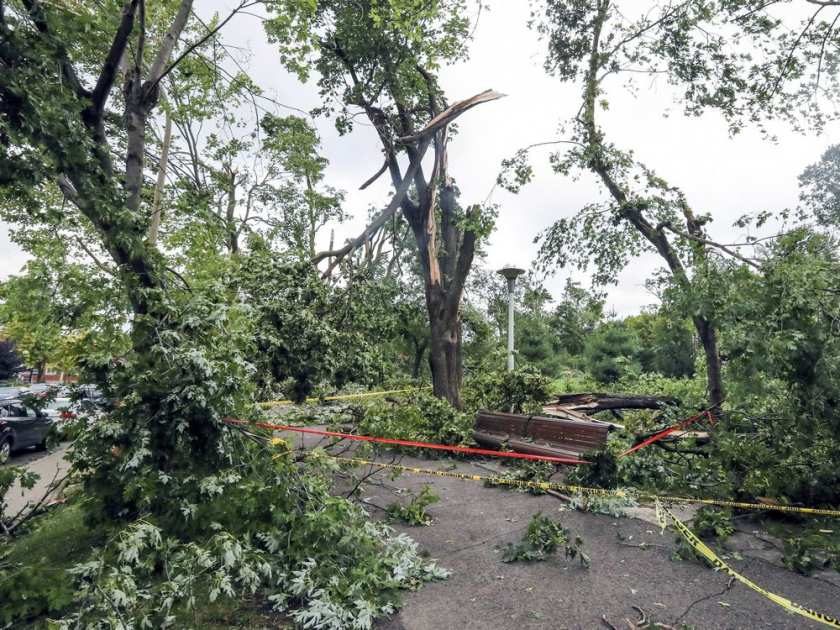
In Montreal, where on the same day high winds punched a 20-block path of destruction through the neighbourhood of Notre-Dame-de-Grâce, we learned what a microburst can do.
Meteorologically speaking, the phenomena are utterly different. But when it comes to their capacity for destruction, they are chillingly alike.
Environment Canada meteorologist Max Desharnais said Wednesday that his office was able to determine that N.D.G. had been hit by a microburst simply by the grim symmetry of the destruction left in its wake.
"Based on the signature of the damage - (fallen) trees laid out in one direction - that's a microburst," he said. "It's a unidirectional signature. ... With a tornado you'll have a roof literally peeled off and a visible signature of rotation."
But even if the mechanics of a "wet" microburst - an intense, rain-fuelled downdraft of air from a severe thunderstorm that slams hammer-like into the ground - are different from those of a tornado, a violently rotating column of air that extends from the base of a thunderstorm to the ground, their potential for devastation is comparable.
The now-confirmed F1 tornado that touched down in Lachute during Tuesday's storms is believed to have packed winds of up to 175 km/h. Desharnais said that based on what Environment Canada was able to see on its radar as the Montreal storm system was being tracked and analyzed, the microburst of wind that cannoned into N.D.G. Park was clocked at about 120 km/h.
While some Montrealers may have been shocked to see so intense a weather phenomenon occur in a dense urban neighbourhood, Desharnais said that if the right environmental conditions are in place, microbursts can pretty much occur anywhere.
"There's nothing specific that would cause a microburst to happen in Montreal or 20 kilometres away," he said, adding that in Tuesday's case, "a very intense storm passed over a highly populated area."
According to an analysis by Environment Canada, there have been nine microbursts recorded in the Montreal area over the past 10 years.



Reader Comments
to our Newsletter